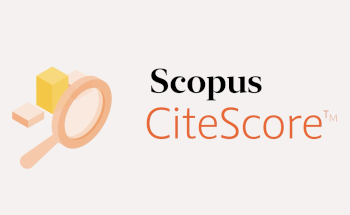Measure of Association Dependent on Sensitivity and Specificity of Diagnostic Screening Tests in a Study Population
DOI:
https://doi.org/10.60787/tnhj.v24i1.776Keywords:
sensitivity, specificity, traditional odds ratio, diagnostic screening tests, state of nature or condition, clinical trialAbstract
Background: The traditional odds ratio and relative risk cannot strictly speaking properly and validly be used because in them, the number of subjects testing positive and negative among subjects known or believed not to have a condition in nature usually are not known and hence the total number of subjects testing positive and negative are not also completely known. Paper proposes, develops, and presents a measure of the strength of association between test results and condition in a population, by using sensitivity and specificity of diagnostic screening tests that are independent of the population under study.
Method: A retrospective study was carried out. The proposed measure of association which always lies between -1 and 1 inclusively enables the researcher to determine not only if an association exists between test results and state of nature or condition in a population and if such an association exists, whether it is positive and direct or negative and indirect thereby giving the measure an advantage over and above the traditional odds ratio method.
Result: The proposed method is easier to interpret and understand than those from the traditional odd ratio approach. For comparison and completeness, it also develops modified sample estimate of the traditional odd ratio and its sample variance from observable sample data. The likelihood ratio showed that the test is very informative.
Conclusion: The proposed measure of association is shown to be at least as efficient and hence as powerful as the traditional odds ratio. The modified traditional odds ratio performs better than the traditional odds ratio. The likelihood ratios are at least as efficient as the proposed method but better than the traditional odd ratio.
Downloads
References
Raffles A, Mackie A, Muir Gray JA. Screening: evidence and practice. 2nd ed. Oxford: Oxford University Press. 2019
Rosner B. Fundamentals of biostatistics. 8th ed. Boston: Brooks Cole, Cengage Learning. 2015.
Fleiss JL,Bruce Levin and Myunghee Cho Paik.. Statistical Method for Rates and proportions (3rd ed), Wiley Interscience, New Jersey. 2003.
Li J, Fine JP. Assessing the dependence of sensitivity and specificity on prevalence in meta-analysis. Biostatistics. 2011; 12:710-22.
Agresti AA. An Introduction to Categorical Data Analysis (Wiley Series in Probability and Statistics) 3rd Edition. New York: Wiley. 2019
Pepe MS. The Statistical Evaluation of Medical Tests for Classification and Prediction. Oxford statistical series 28, Oxford: University Press, U.K; 2003
Naeger DM, Kohi MP, Webb EM, Phelps A, Ordovas KG, Newman TB. Correctly using sensitivity, specificity, and predictive values in clinical practice: how to avoid three common pitfalls. AJR Am J Roentgenol. 2013; ;200(6): W566-70.
Bartol T. Thoughtful use of diagnostic testing: Making practical sense of sensitivity, specificity, and predictive value. Nurse Pract. 2015; ;40(8):10-2.
Baron JA. Clinical epidemiology, in Teaching Epidemiology eds. Olsen J; Saracci R; and Trichopoulos D; Oxford: Oxford University Press, 2001; 237-249.
Leeflang MM, Rutjes AW, Reitsma JB, Hooft L, Bossuyt PM. Variation of a test’s sensitivity and specificity with disease prevalence. Cmaj. 2013;185(11): E537-44.
Perry GP, Roderer NK and Asnar SA. Current perspective of medical informatics and health sciences librarianship. J Med Libr Assoc. 2005; 33:199–206.
Reitsma JB, Glas AS, Rutjes AW, Scholten RJ, Bossuyt PM, Zwinderman AH. Bivariate analysis of sensitivity and specificity produces informative summary measures in diagnostic reviews. Journal of clinical epidemiology. 2005;58(10):982-90.
Ma X, Nie L, Cole SR, Chu H. Statistical methods for multivariate meta-analysis of diagnostic tests: an overview and tutorial. Statistical methods in medical research. 2016 Aug;25(4):1596-619.
Oyeka IC, Umeh EU. Measuring strength of association in repeated samples. African Journal of Mathematics and Computer Science Research. 2012;5(14):274-7.
Glasziou P, Hilden J. Test selection measures. Med Decis Making 1989;9(2):133–41.
Kraemer HC. Risk ratios, odds ratio, and the test QROC. In: Evaluating medical tests. Newbury Park, CA: SAGE Publications, Inc.; 1992; 103–13.
Hlatky MA, Lee KL, Botvinick EH, Brundage BH. Diagnostic test use in different practice settings. A controlled comparison. Arch Intern Med 1983;143(10):1886–9.
Published
Issue
Section
License
Copyright (c) 2024 Journal and Publisher

This work is licensed under a Creative Commons Attribution-NonCommercial-ShareAlike 4.0 International License.
The Journal is owned, published and copyrighted by the Nigerian Medical Association, River state Branch. The copyright of papers published are vested in the journal and the publisher. In line with our open access policy and the Creative Commons Attribution License policy authors are allowed to share their work with an acknowledgement of the work's authorship and initial publication in this journal.
This is an open access journal which means that all content is freely available without charge to the user or his/her institution. Users are allowed to read, download, copy, distribute, print, search, or link to the full texts of the articles in this journal without asking prior permission from the publisher or the author.
The use of general descriptive names, trade names, trademarks, and so forth in this publication, even if not specifically identified, does not imply that these names are not protected by the relevant laws and regulations. While the advice and information in this journal are believed to be true and accurate on the date of its going to press, neither the authors, the editors, nor the publisher can accept any legal responsibility for any errors or omissions that may be made. The publisher makes no warranty, express or implied, with respect to the material contained herein.
TNHJ also supports open access archiving of articles published in the journal after three months of publication. Authors are permitted and encouraged to post their work online (e.g, in institutional repositories or on their website) within the stated period, as it can lead to productive exchanges, as well as earlier and greater citation of published work (See The Effect of Open Access). All requests for permission for open access archiving outside this period should be sent to the editor via email to editor@tnhjph.com.













